|
|
|
|
 |
|
|
|
|
 |
 |
 |
|
|
|
 |
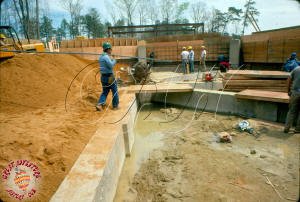 |
|
|
|
|
 |
From the earliest concepts of Great Adventure, a log flume style ride
was envisioned as being one of the park's main attractions. The ride was
planned for the Enchanted Forest and was included in the final design of
the theme park when the modified and scaled down designs took shape.
Warner LeRoy's visions for the park wanted everything to be larger than
life and the biggest and best in the world, and the Log Flume was to be
no exception as the world's longest flume ride.

In early 1974 construction on the theme park began and
one of the biggest attractions built was the Log Flume, which was
designed to run through a wooded peninsula. Like with the rest of the
park, construction was planned very carefully with the preservation of
as many trees as possible. |
 |
|
|
|
 |
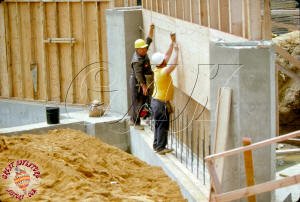 |
|
|
|
 |
 |
|
|
|
|
 |
 |
 |
|
|
|
|
 |
Construction of the ride's station was a big job with the octagonal
concrete base for the building serving as the foundation for the
building as well as holding water. The station for the Log Flume
was one of the first of Arrow Dynamics flume rides to utilize a
turntable loading and unloading platform, designed to keep the ride
vehicles moving and increase throughput.
Once the concrete walls
were in place, the wooden structure of the station roof went up along
with a tower which would support the huge water wheel. At the top of the
tower a chute would pump water onto the wheel, turning it and creating
an additional way for guests to get wet. |
 |
|
|
|
|
 |
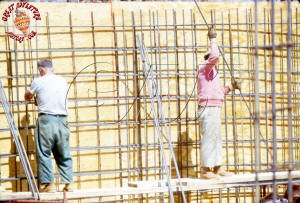 |
 |
|
|
|
|
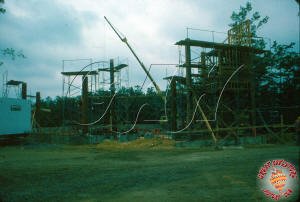 |
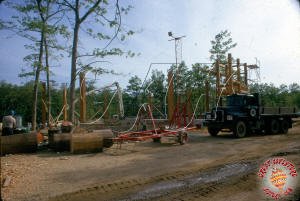 |
 |
|
|
|
|
 |
 |
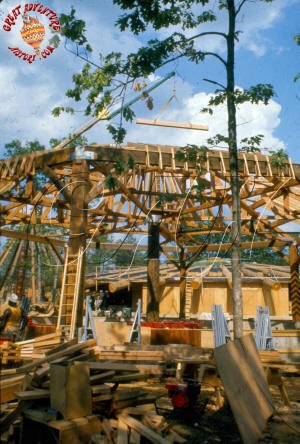 |
|
|
|
 |
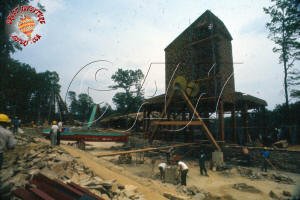 |
|
|
|
|
 |
In front of the ride station, the huge retention pond took shape with
its concrete lining. The walls of the pool were lined with decorative
stack stone creating a rustic look to match the western themed section
of the park.
Out on the peninsula the ride's trough took shape,
with the massive support columns being installed among the trees.
The steel spine that supported the trough was then installed and the
metal brackets which hold the fiberglass trough were attached.
Finally, the fiberglass was put in place section by section and the
pieces were sealed and made watertight. |
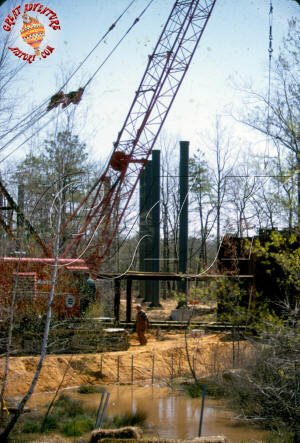 |
|
|
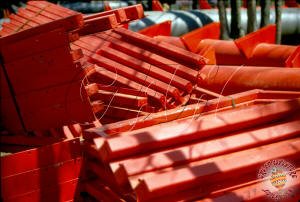 |
|
|
|
|
 |
 |
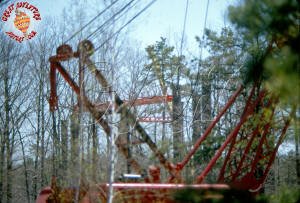 |
|
|
|
|
 |
As the July 1st opening day drew near, the final touches were put in
place on the Log Flume. Despite all the best efforts of the crews, the
Log Flume and the rest of the Rootin' Tootin' Rip Roarin' area of the
park were not quite finished, and the area opened three days later on
July 4th, 1974. |
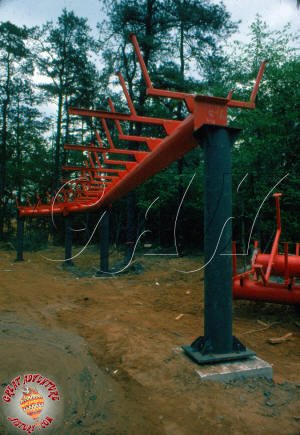 |
|
|
|
 |
 |
|
|
|
 |
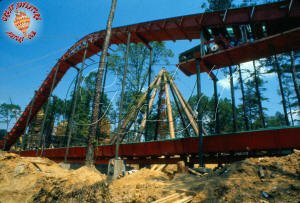 |
|
|
|
|
 |
Once the Log Flume opened, it immediately became a huge success,
becoming the most popular ride in the park in the summer heat. Long
lines of guests waited for hours in the hot sun to get their chance to
ride. Originally, the ride had no covered queue, with the lines snaking
through the area where the queue house would later be constructed.
Lines were so long that an additional overflow queue are was setup on
the walkway along the lake to accommodate guests.
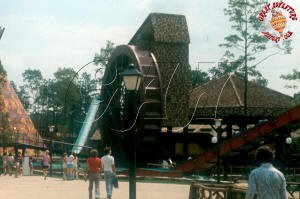
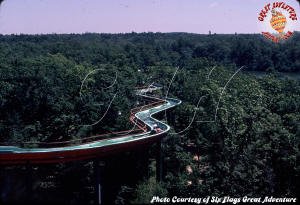
The Log Flume was considered by many guests to be a nearly perfect ride,
combining the thrills of a roller coaster with the exciting splash of
refreshing, cool water. The long ride time made most guests feel like
the long wait was worth it.
Like the other attractions in the
Rootin' Tootin' Rip Roarin' area of the park, the details of the ride
like the setting, the colorful shingled wooden structure of the station,
the huge waterwheel and the crystal clear water of the retention pond
were just fantastic. While some guests had seen or ridden flumes
in places like the New York World's Fair or Coney Island, no previous
flume ride in the area had been nearly as large or as elaborate.
The Log Flume's final drop mirrored the neighboring Super Teepee and
the giant structure looming next to the final drop served to make the
final hill look even bigger and more daunting as riders ascended the
lift hill before making the big plunge.
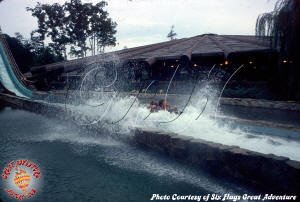
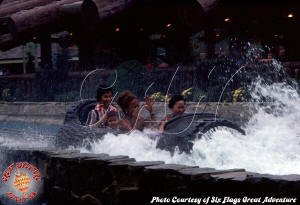
The final drop of the Log Flume was strategically placed so it could be
viewed by no riders both along the pathways and from the patios of the
Best of the West restaurant. The bridge that served as the entrance to
Best of the West offered a great place to stand and watch the boats
splash down. Though tame looking by today's standards, the final drop of
the Log Flume was quite intimidating to many guests, and many enjoyed
just standing and watching the ride.
|
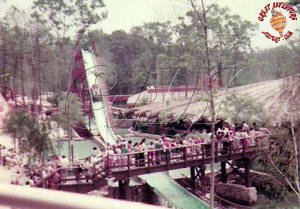 |
|
|
|
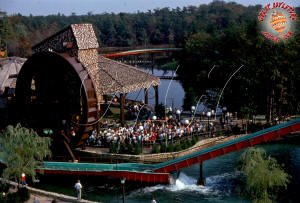 |
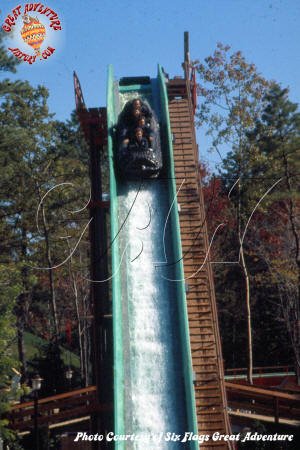 |
|
|
 |
|
|
|
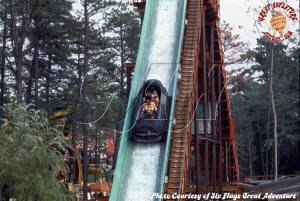 |
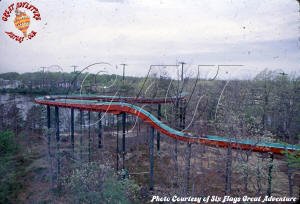 |
|
|
|
 |
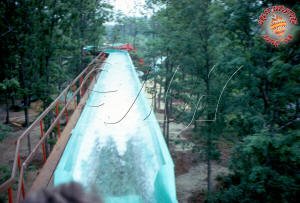 |
|
|
|
 |
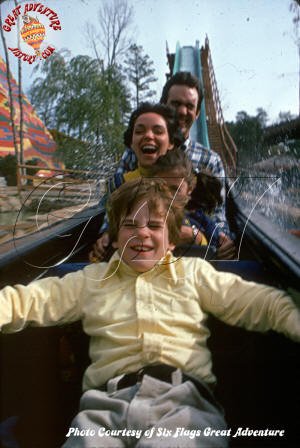 |
|
|
|
 |
 |
|
|
|
 |
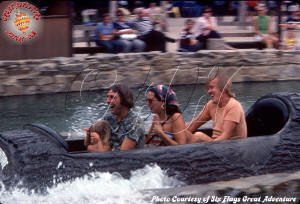 |
|
|
|
|
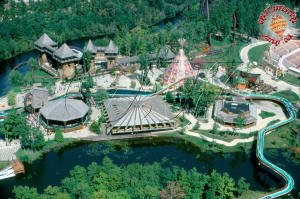 |

 |
|
|
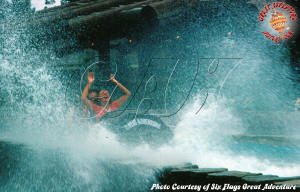 |
|
|
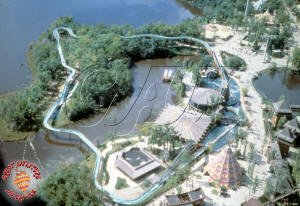 |
|
|
|
|
 |
 |
 |
|
|
|
 |
 |
|
|
|
|
 |

The Log Flume featured an elaborate fiberglass log sign at its
entrance and despite the size and visibility of the sign, guests often
couldn't find the entrance (a problem to this day). Often guests would
cross the bridge to Best of the West where the ride's exit is now located.
 |
 |
|
|
 |
|
|
|
|
 |
 |
 |
|
|
|
|
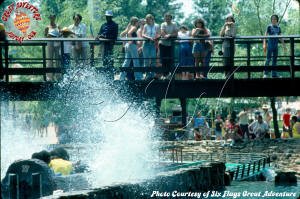 |
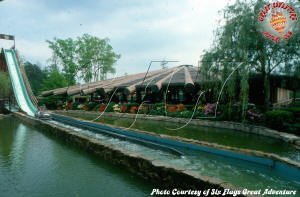 |
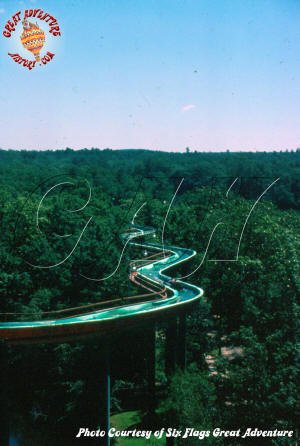 |
|
|
|
 |
 |
|
|
|
|
 |
 |
 |
|
|
 |
|
|
|
|
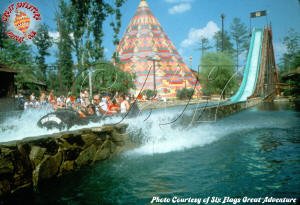 |
 |
 |
|
|
|
|
 |
 |
When we put the book "Images of America: Six Flags Great Adventure" we
wanted to find a photo that really represented the park, and the Log
Flume was the perfect symbol. As one of the original rides and still
being one of the most popular, we felt it was the best choice. We
always get the question, "do you know who those people are?" and the
answer is no, but we would love to find out!
|
 |
|
 |
|
|
|
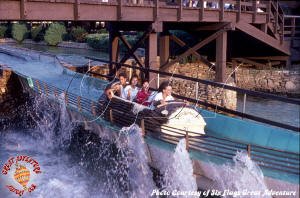 |
 |
|
|
|
|
|
|
|
|
 |
 |
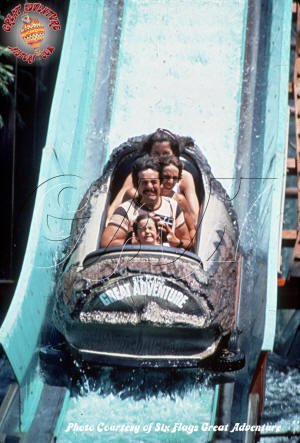 |
|
|
|
|
 |
 |
 |
|
|
|
|
|
|
|
|
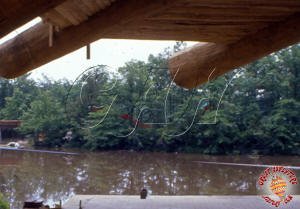 |
 |
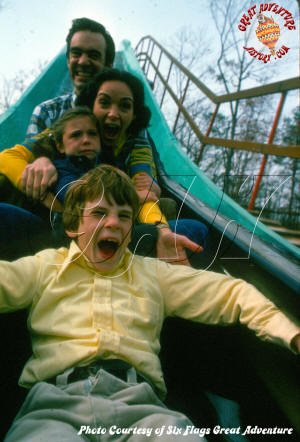 |
|
|
While doing research on the park, we discovered something unique that
was not documented anywhere we could find, and that was that the Log
Flume originally featured an uphill section. Apparently this was a
short lived feature that was located on the back edge of the ride where
the second drop is now. The track featured a drop that using the
boats' momentum allowed them to climb up the small hill to the trough.
The uphill feature was removed after several seasons most likely for
safety and operational reasons. Other Arrow flume rides had this same
feature as well, and most seem to have removed it with the exception of
the flume ride at Kennywood park in Pittsburgh, PA. |
 |
|
|
|
 |
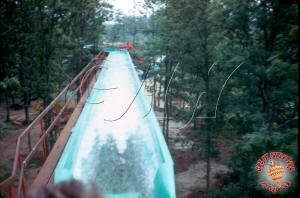 |
|
|
|
|
|
|
|
|
 |
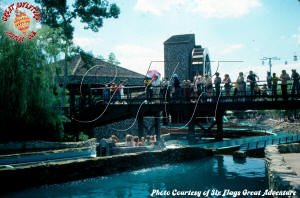
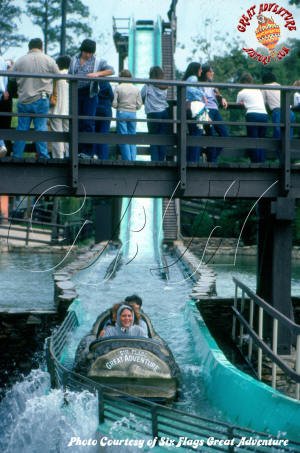 |
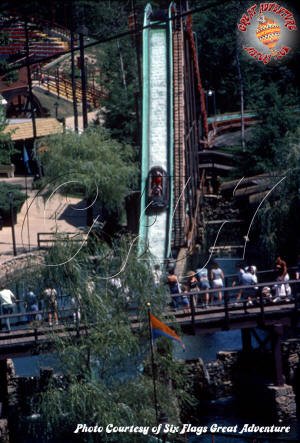 |
|
|
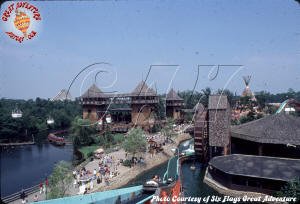 |
|
|
|
 |
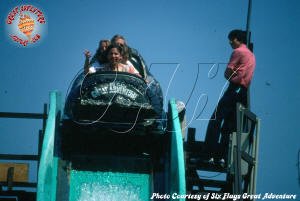 |
|
|
|
|
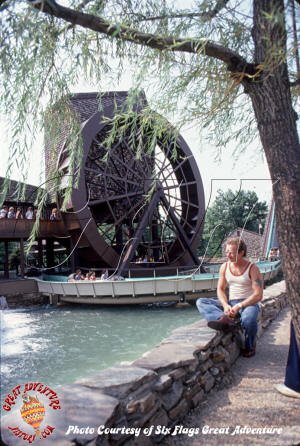 |
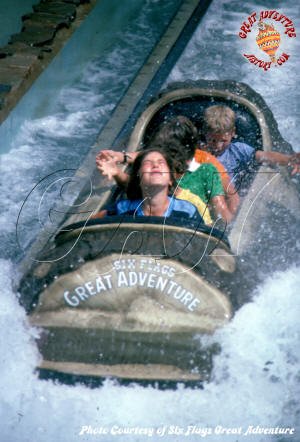 |
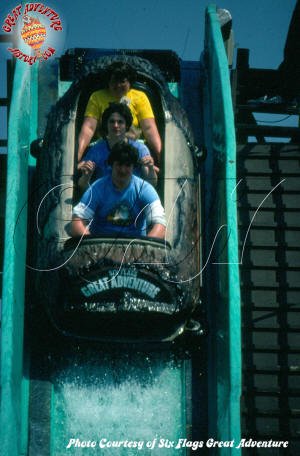 |
|
|
|
|
|
|
|
|
 |
|
|
Something taken for granted in many parks is the "on-ride" photo, but
the idea of doing photos like this was really pioneered at Great
Adventure with the original Flume Photos.
The way the
system originally worked (before the advent of digital photography) was
guests would go to the photo booth and pre-purchase their picture.
They would then be given a small orange flag which went into a hole in
the flume boats. A photographer would be stationed in the Flume Photo
building and would have to watch for those flags and snap a picture of
the boat as it went down the drop. The pictures were instant and
guests could then pick them up after exiting the ride.
The
system worked fairly well, but if the photographer was distracted or had
a malfunction with the camera the guests would either have to re-ride or
get a refund. Most went for the re-ride since they were sent back
up the exit and didn't have to wait on line for a second chance to ride.
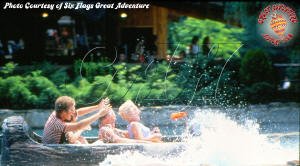 |
|
 |
 |
|
|
|
 |
 |
|
|
|
|
|
|
|
|
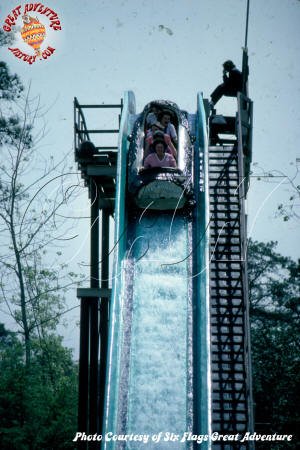 |
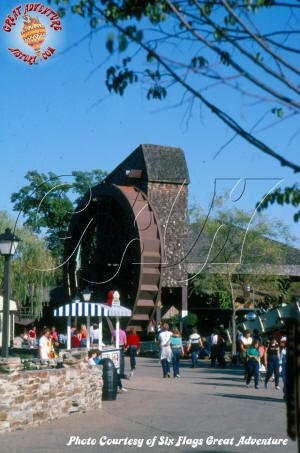 |
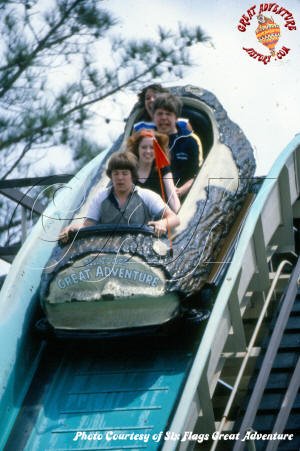 |
|
|
|
|
 |
Over the seasons the Log Flume has had minor modifications and
improvements. The color of the trough has changed several times as
it has been repainted. The lighting in the station has been
updated, with the dozens of incandescent lights being replaced with
large mercury vapor lamps which are more efficient and brighter. The
waterwheel has been rebuilt several times as the wooden parts have
rotted out. Periodically the rubber lift belts and rollers beneath
them have been replaced as they wear out. The metal tracks on the drops
periodically are replaced as they also wear out from the constant use
each season. |
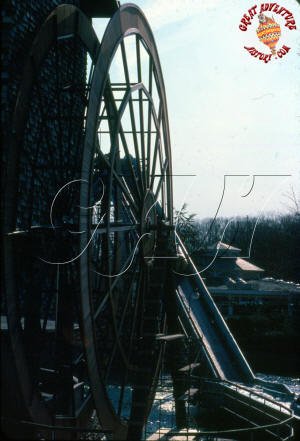 |
|
|
 |
|
|
|
|
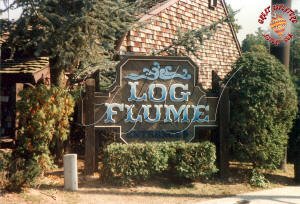 |
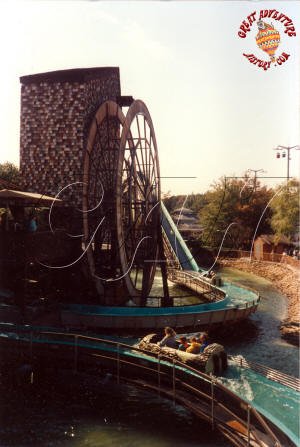 |
 |
|
|
 |
|
|
|
|
 |
 |
 |
|
|
|
 |
 |
|
|
|
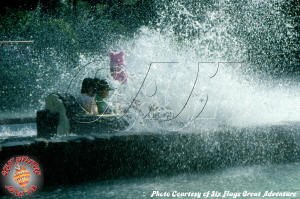 |
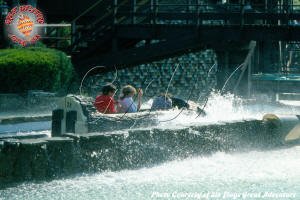 |
|
|
|
|
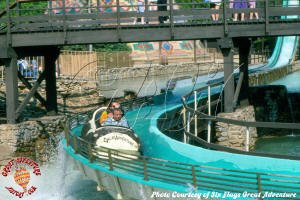 |
 |
 |
|
|
|
|
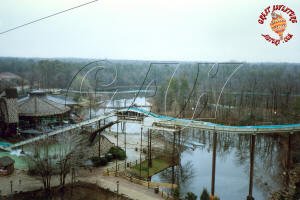 |
 |
 |
|
|
|
|
 |
Early in the history of the Log Flume a boat capsized in the trough at
the end of the drop. Modifications were quickly made, adding safety
rails along the sharp curve sections in and out of the station, and
additional holes were added to the trough to allow additional
"watering-off" lowering the water level and reducing the amount of
floating that the boats actually do. The flume boats are designed
to float, but are stabilized with wheels that roll down the drops. The
drops on the flume are designed to have minimal water on them, relying
on the wheels beneath the boats for added stability. |
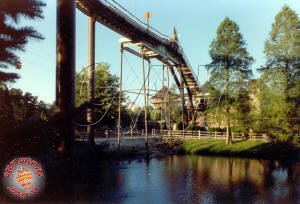 |
|
|
|
 |
 |
|
|
|
|
 |
 |
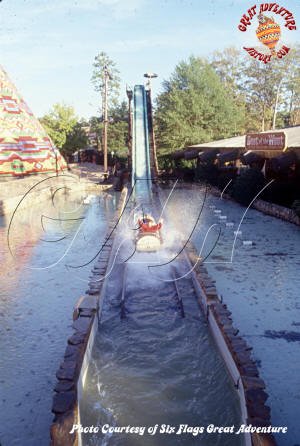 |
|
|
 |
|
|
|
|
 |

|
Manufacturer: |
Arrow
Development Co. - California |
| Ride
Model: |
Log Flume |
|
|
| Number
of Logs: |
27 Boats |
| Log
Capacity: |
5 Adults or 900 lbs |
|
|
| Number
of Guests per Cycle: |
135 |
| Ride
Duration: |
5 minutes |
|
|
|
Loading/Unloading Time: |
90 seconds |
|
Approximate Capacity: |
1215 guests per hour |
|
|
| Water
Provision: |
Ride reservoir: pump under lift #1 |
| Station
Turntable Rotation: |
Clockwise |
|
|
| Height
of Ride: |
40 feet 5 7/8 inches at highest point |
| Ride
Length: |
2160 feet |
Source: 1994 Six Flags Great Adventure Fact Sheet |
|
|
 |
|
|
 |
|
|
|
|
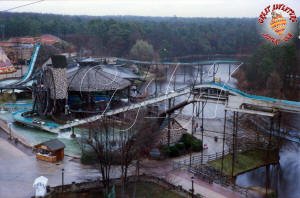 |
 |
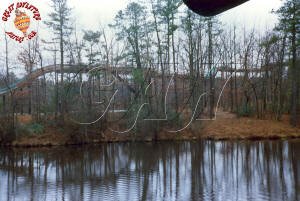 |
|
|
|
|
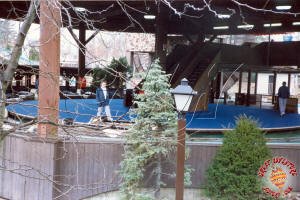 |
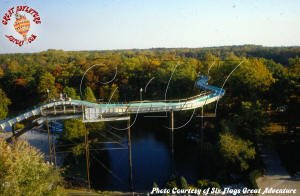 |
 |
|
|
|
|
 |
 |
 |
|
|
|

|
1974-1975 |
|
The Flume |
|
1976-1977 |
|
Log Flume |
|
1978-1980 |
|
Nestea Log Flume |
|
1981-1985 |
|
Log Flume |
| 1986 |
|
7-Up Log Flume |
|
1987-1992 |
|
Log Flume |
|
1993-Present |
|
Log Flume - |
|
|
Gold Rush Saw Mill |
|
 |
|
|
|
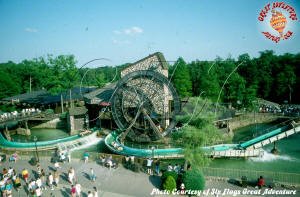 |
 |
|
|
|
|
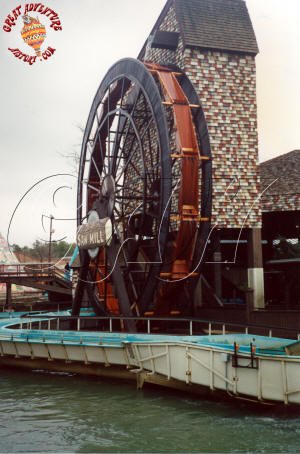 |
 |
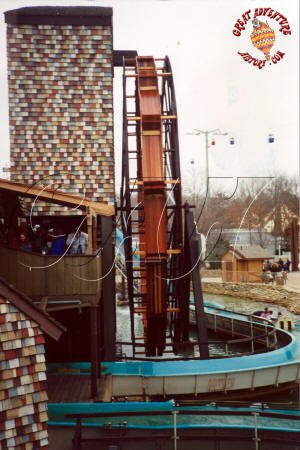 |
|
|
|
|
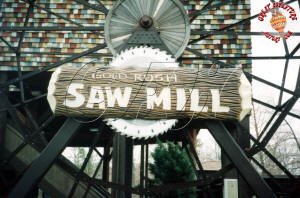 |
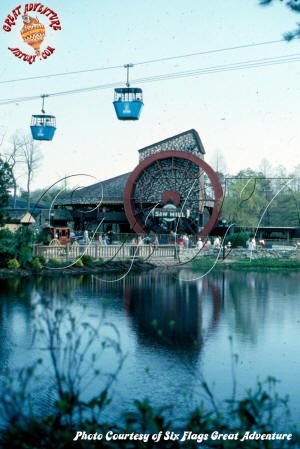 |
 |
|
|
|
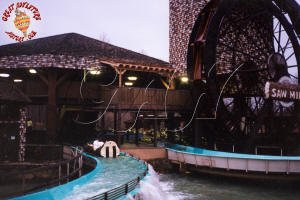 |
 |
|
|
|
|
 |
 |
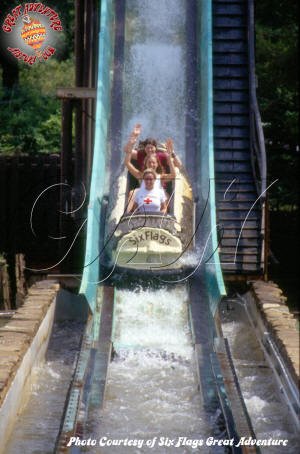 |
|
|
|
|
 |
As part of the park's safety improvements in 1988, a fence was added
around the Log Flume's retention ponds. Up to that point the low
stone wall was the only barrier between guests and the water.
When Time Warner owned Six Flags and the themed elements of the park
were enhanced, the Log Flume was given a large new sign on the water
wheel, with the new name Gold Rush Saw Mill. At this time the flume
boats were also updated with the Great Adventure name being removed and
the more generic Six Flags name placed on the boats.
|
 |
|
|
|
|
 |
 |
 |
|
|
|
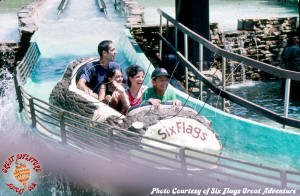 |
 |
|
|
|
|
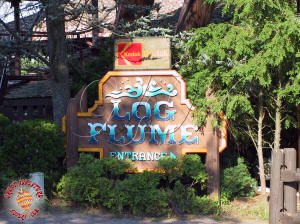 |
Originally, the path to the station featured side by side staircases -
the right side was for guests going up to the platform to ride and the
left side was for exiting riders. Often those exiting riders would
jump back into line, cutting all the guests waiting in the queue house.
This became such a major issue that around 1990, a new elevated walkway
was built over the rotating station platform so that exiting riders were
led away from the queue house of waiting guests and were deposited at the
Best of the West patio without a chance to cut back into the line.
The on-ride
photo system was updated as technology improved with the original Flume
Photo booth being removed from its location at the base of the last
drop. A new photo booth was constructed right at the ride exit so
guests would pass by as they got off the ride and could see their
pictures.
Other changes made to the Log Flume in recent years have been the
addition of coin operated sprayers offering an additional chance for
riders to get wet.
The park's Fast Lane (now known as Flash Pass) system was added to the
ride as well, with the original exit trail now being used by
guests to bypass the queue house. |
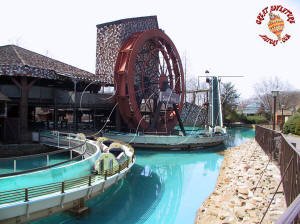 |
|
|
|
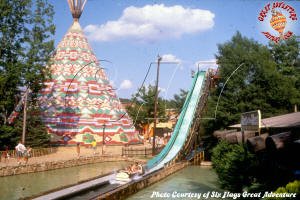 |
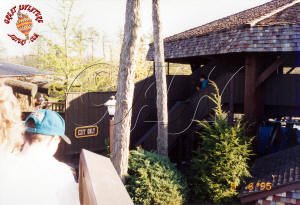 |
|
|
|
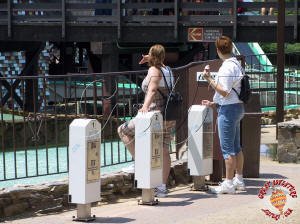 |
 |
|
|
|
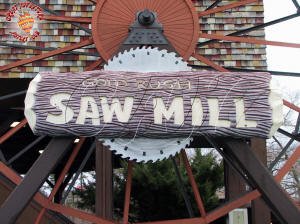 |
 |
|
|
|
|
 |
 |
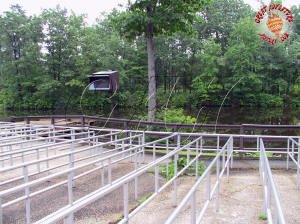 |
|
|
|
|
 |
 |
 |
|
|
|
|
 |
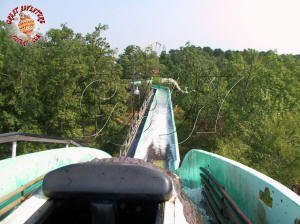 |
 |
|
|
|
|
 |
 |
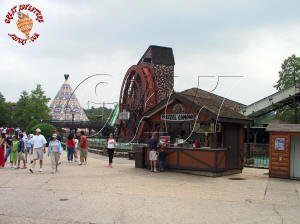 |
|
|
|
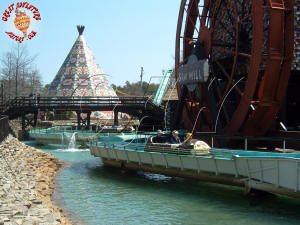 |
 |
|
|
|
|
 |
 |
 |
|
|
|
|
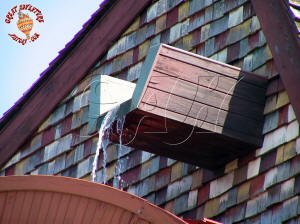 |
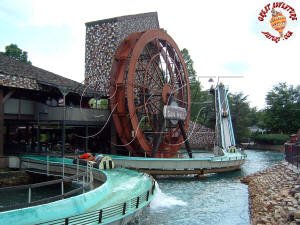 |
 |
|
|
|
|
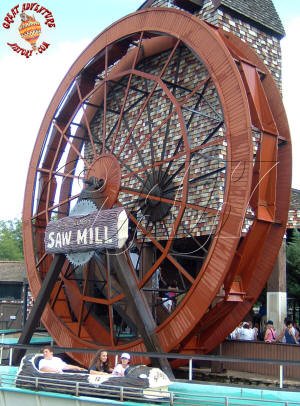 |
 |
 |
|
|
 |
|
|
|
|
 |
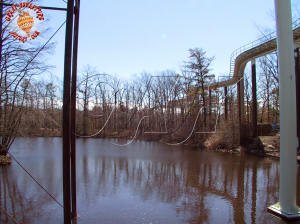 |
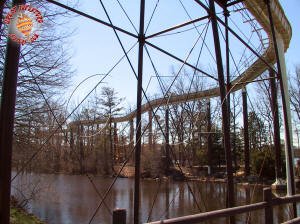 |
|
|
|
|
 |

 |
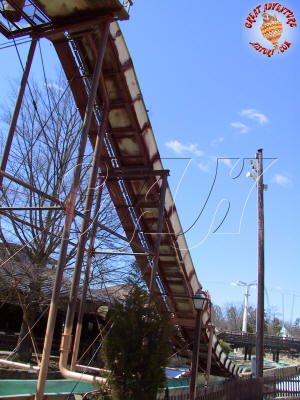 |
|
|
 |
|
|
|
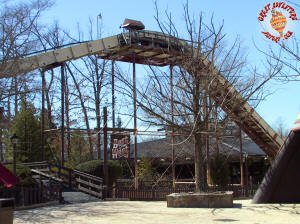 |
 |
|
|
|
|
 |
 |
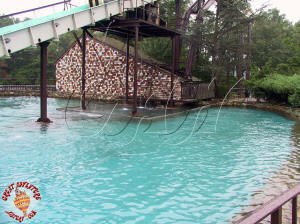 |
|
|
|
|
 |
 |
 |
|
|
|
|
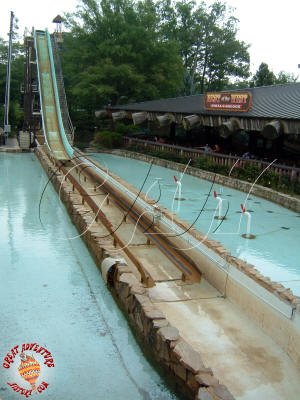 |
 |
 |
|
|
|
|
 |
 |
 |
|
|
|
|
 |
 |
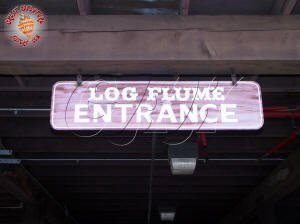 |
|
|
|
|
 |
 |
 |
|
|
|
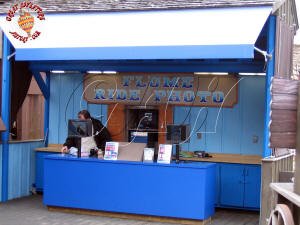 |
 |
|
|
|
|
 |
 |
 |
|
|
|
 |
 |
|
|
|
|
 |
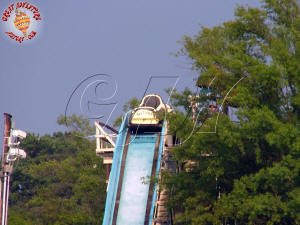 |
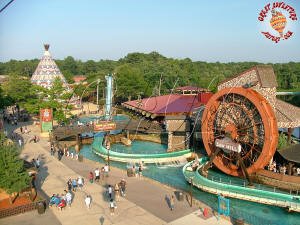 |
|
|
|
|
 |
 |
 |
|
|
|
|
 |
 |
 |
|
|
|
|
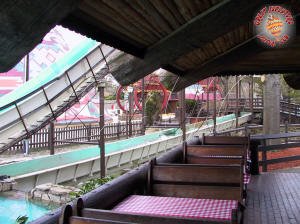 |
 |
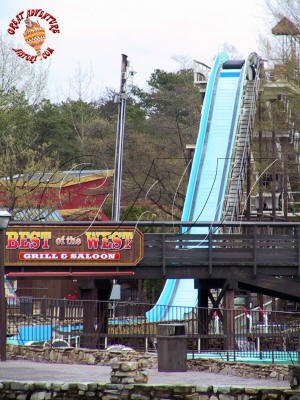 |
|
|
|
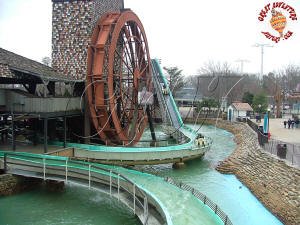 |
 |
|
|
|
|
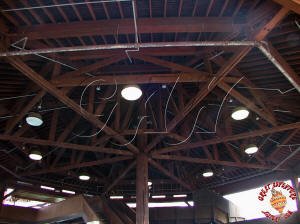 |
 |
 |
|
|
|
|
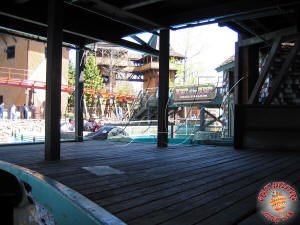 |
 |
 |
|
|
|
|
 |
 |
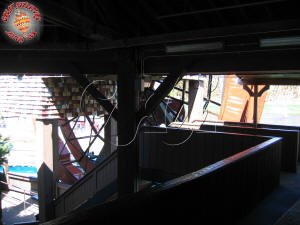 |
|
|
|
|
 |
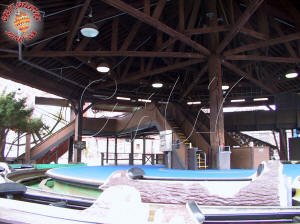 |
 |
|
|
|
|
 |
As the Log Flume has aged over time, the trough has been patched time
and again as leaks appear and are repaired. The retention basin has also
been recently been patched during the off seasons with a new concrete
lining being applied to the existing pond to stop the leaks that had
developed over time.
The Log Flume had been so popular when it
first opened that a second flume known as the Hydro Flume was added for
the park's sophomore season. Over time with the addition of other water
rides and a water park on property the second flume was removed and the
Log Flume was once again the park's only flume ride.
 |
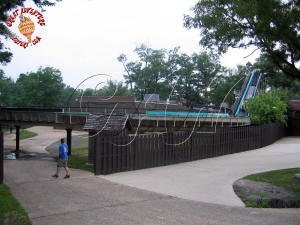 |
|
|
|
 |
 |
|
|
|
 |
 |
|
|
|
|
 |
 |
 |
|
|
|
|
 |
 |
 |
|
|
|
 |
 |
|
|
|
|
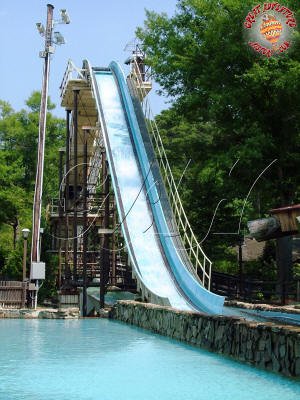 |
 |
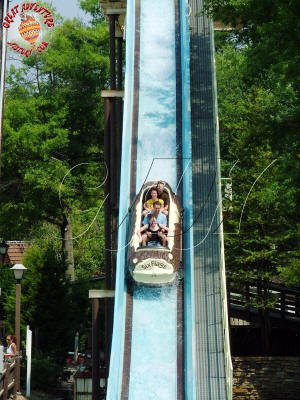 |
|
|
 |
|
|
|
|
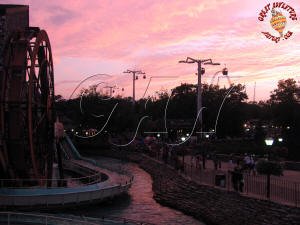 |
 |
 |
|
|
|
|
 |
 |
 |
|
|
|
|
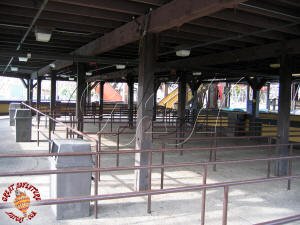 |
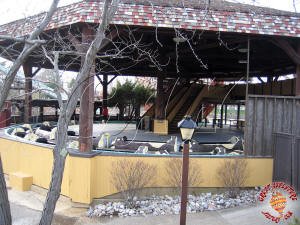 |
 |
|
|
|
|
 |
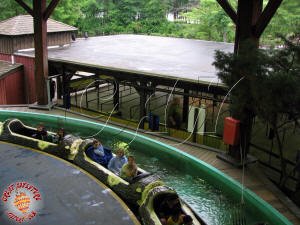 |
 |
|
|
|
|
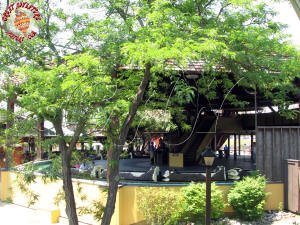 |



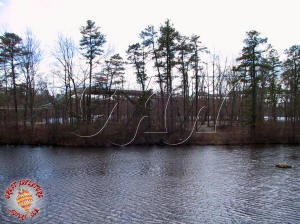
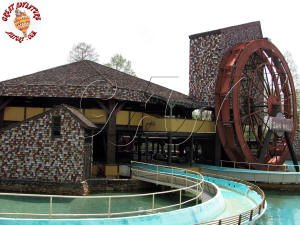
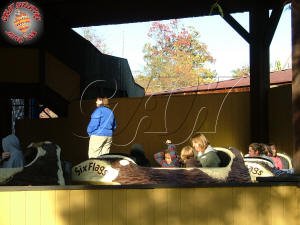
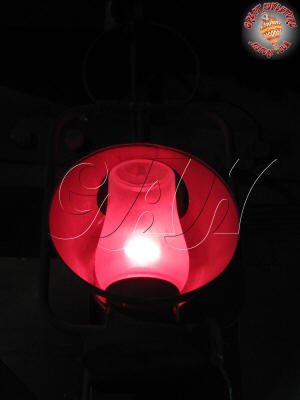


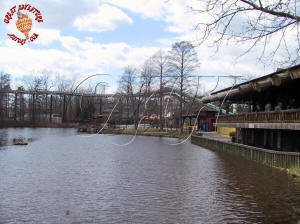


 |
 |
|
|
|
 |
 |
|
|
|
 |
 |
|
|
|
 |
 |
|
|
|
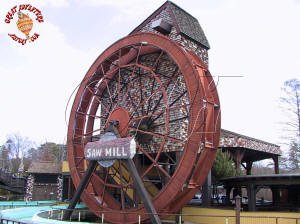 |
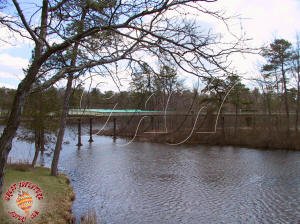 |
|
|
|
 |
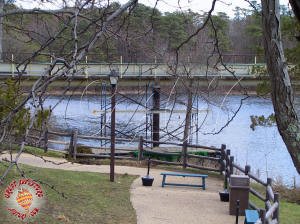 |
|
|
|
 |
 |
|
|
 |
|
|
|
 |
 |
|
|
|
 |
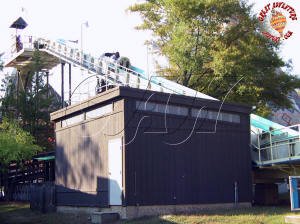 |
|
|
|
 |
 |
|
|
|
 |
 |
|
|
|
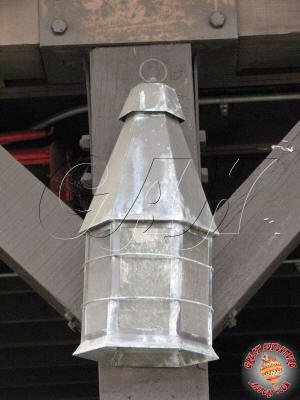 |
 |
|
|
|
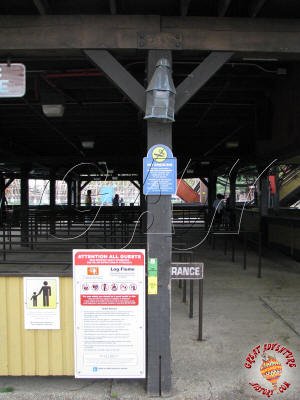 |
 |
|
|
|
|
 |
 |
 |
|
|
|
|
 |
 |
 |
|
|
|
|
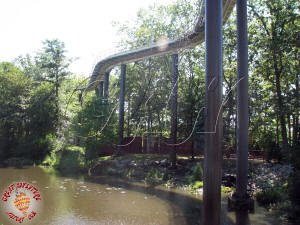 |
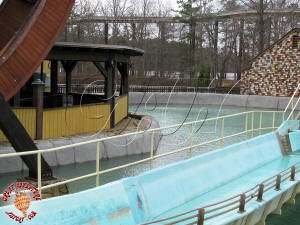 |
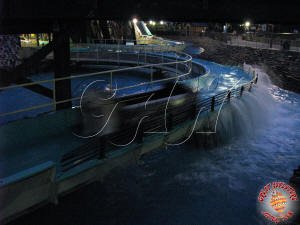 |
|
|
|
|
 |
 |
 |
|
|
|
|
 |
 |
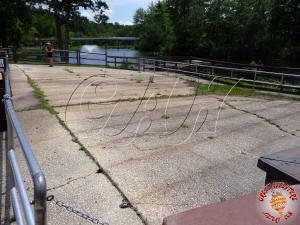 |
|
|
|
|
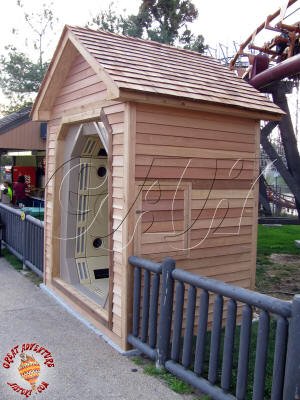 |
 |
 |
|
|
|
|
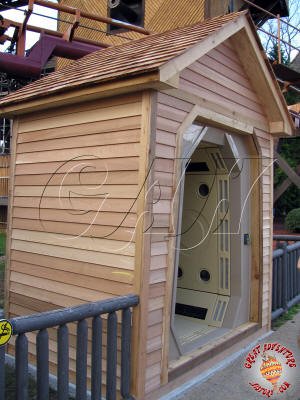 |
More recent additions to the Log Flume have been lockers where riders
have been required to store their belongings prior to boarding the ride.
Near the ride's exit a "family dryer" has been added allowing guests to
dry off on cooler days.
The overflow queue area behind the ride
was removed and replaced with grass after years of sitting unused.
The Log Flume has delighted millions of riders in more than 37
seasons and will hopefully continue to be a favorite of guest for many
years to come. |
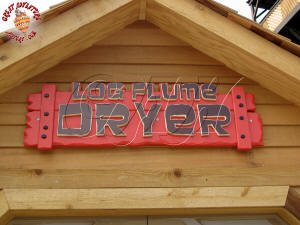 |
|
|
 |
|
|
|
|
 |
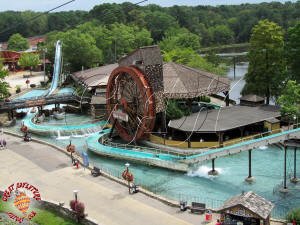 |
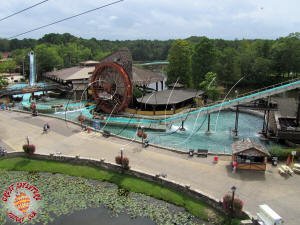 |
|
|
|
|
|
|
|
|
 |
|
|
|
|
 |
 |
 |
|
|
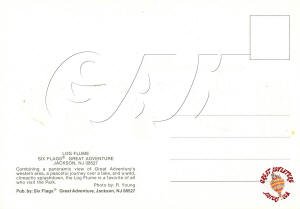 |
|
|
|
|
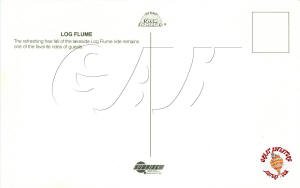 |
 |
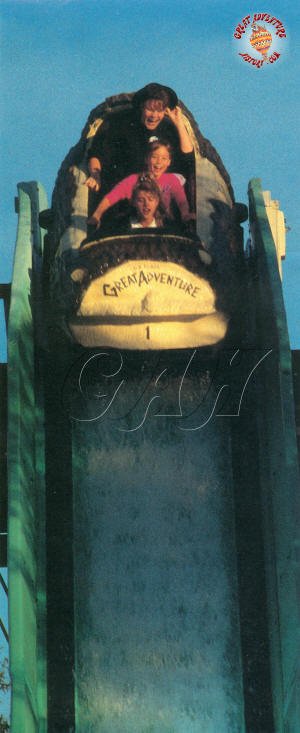 |
|
|
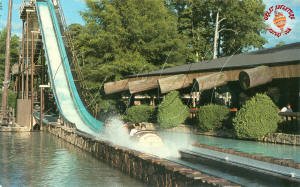 |
|
|
|
|





